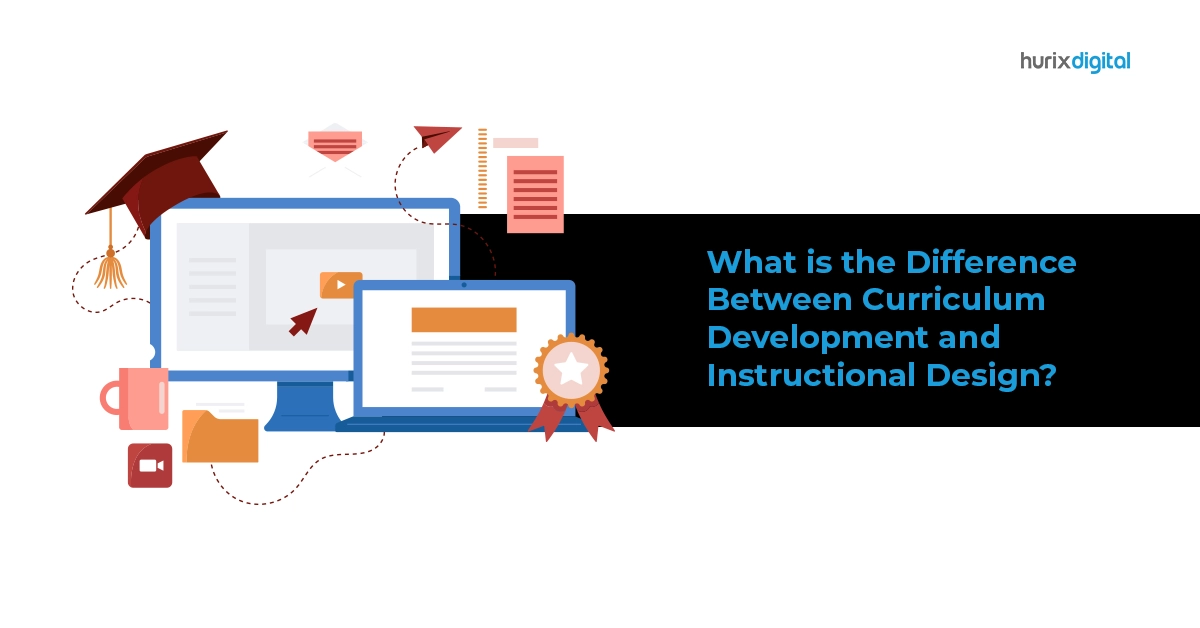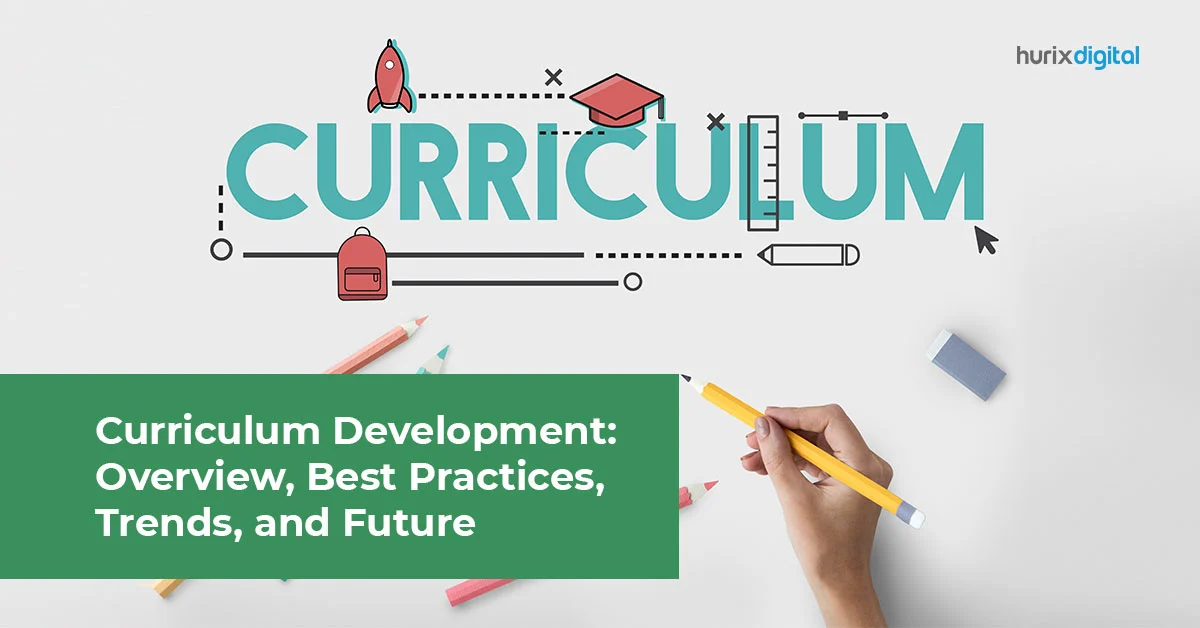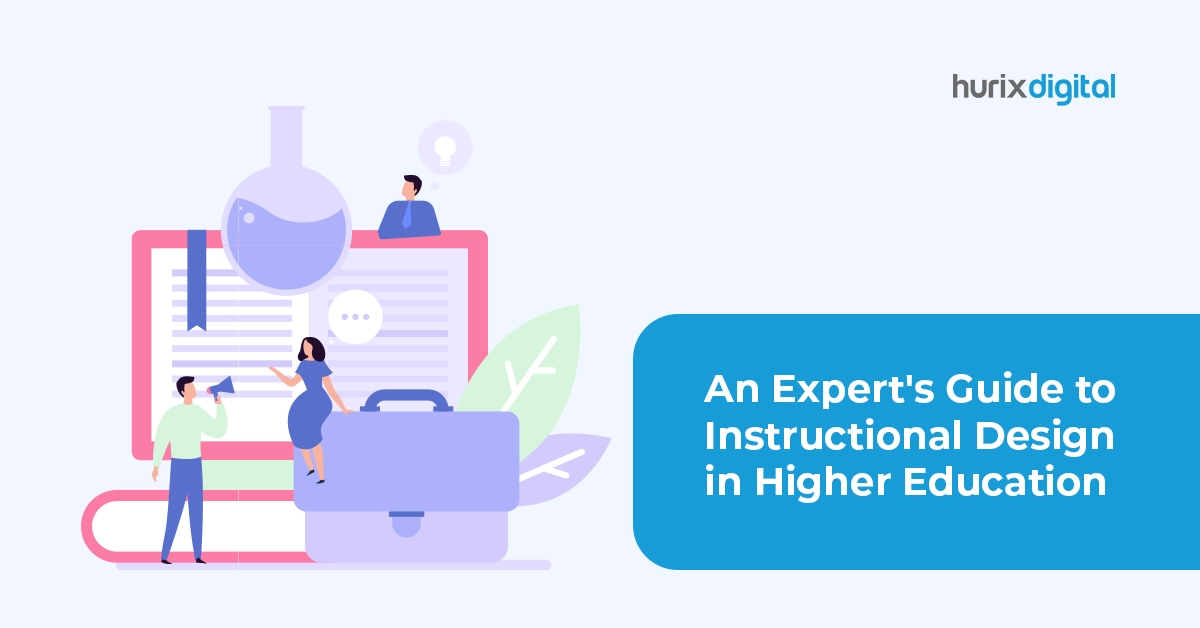Summary
This blog explores the key differences between curriculum development and instructional design. It also provided the key skills required for both processes.
Curriculum development and instructional design are two closely related fields involved in developing educational content. As such, these two terms are sometimes used interchangeably.
However, the concept of curriculum development varies from instructional design on several counts. While curriculum development answers the ‘what’ of the learning process, instructional design deals with the ‘how’ of it.
This blog explores the key differences between curriculum development and instructional design.
Table of Contents:
- What is Curriculum Development?
- What is Instructional Design?
- What are the Key Differences Between Curriculum Development and Instructional Design?
- Conclusion
What is Curriculum Development?
Curriculum development refers to a planned course of action aimed at enhancing the quality of the learning experience for students.
The process involves developing learning activities and updating courses to achieve the desired learning outcomes. It also deals with the assessment of the learning outcomes.
Also Read: The Relationship Between Curriculum Development and Evaluation
What is Instructional Design?
Instructional design refers to the process of designing, developing, and delivering learning experiences.
It focuses on identifying the most suitable strategies and resources to engage learners digitally and deliver the intended learning experiences.
What are the Key Differences Between Curriculum Development and Instructional Design?
Both curriculum development and instructional design deal with content. But they don’t follow the same route.
Here are the primary differences between curriculum development and instructional design:
1. Orientation
Curriculum development and evaluation concerns with generating or improving the existing content of a course. It tells you what content is to be generated. As such, curriculum planning and development follow a content-oriented strategy.
On the other hand, the instructional design emphasizes the tools, strategies, and methods used to engage learners when dealing with the content. It tells you how the content is to be used.
In this case, the process is of more importance. Hence, instructional design follows a process-oriented strategy.
2. Perspective
Curriculum development impacts what people learn in a certain course or program. When assessing objectives, standards, and criteria, curriculum design often adopts a wider perspective.
Instructional design impacts how people learn in a particular course or program. The perspective gets narrower for instructional design since the focus is on identifying specific methods and materials for the purpose.
3. Skills
A major point of difference between curriculum development and instructional design is the skills required to achieve the desired results.
Some skills can be useful for both processes. But certain skills can be more useful when dealing with one process than the other. Let’s take a look at them.
Skills Required by Instructional Designers:
Extensive Research Skills
Research forms an essential part of the instructional design process. Whether the requirement is for instructional design in higher education or something basic, research forms the first step of the process.
Instructional designers need to apply their research skills to understand the end-user or audience of their learning materials. They also should have a thorough idea about the content requirement of the program or course.
At the same time, they must be aware of the organization’s expectations from the learning process. The final thing to research is the tools and technology that can help to attain the goals in the best way possible.
Ability to Solve Problems Effectively:
The ability to solve problems is crucial for instructional designers. Being adept at problem-solving enables them to experiment with new ideas and incorporate them effectively into system designs. This can help them to elevate their methods continuously.
Efficiency in Project Management:
Project management is yet another area where instructional designers need to be efficient. Instructional design projects involve varied requirements, such as understanding the project objective, designing ways to design effectively, etc.
Being skilled in project management can help them prioritize tasks and aim for the successful execution of the project.
Skills Required by Curriculum Developers:
Ability to Think Analytically:
One of the major requirements of a curriculum developer is the ability to study student performance data. Once this is done, they need to apply their analysis to assess teaching strategies and curriculum materials. They have to carry out such analysis for multiple data points.
After carrying out a thorough analysis, they need to recommend changes to the existing curriculum. Curriculum developers must be able to use their logical thinking skills to determine the pros and cons of the solution they recommend.
Further, they should be able to suggest performance measures that can help determine the success of the recommended actions.
Application of Technical Knowledge:
When it comes to curriculum development, developers have to apply their technical knowledge at several points.
Their technical skills can help them to use interactive technology in the curriculum development model seamlessly. Technical skills are also useful for them when they have to add new features to an existing curriculum.
Use of Communication Skills:
For curriculum developers, clear communication skills are a must. At the same time, they should also possess the skill to listen intently.
When developing a curriculum, a developer needs to communicate with the teachers or educators to understand their point of view. These can prove to be quite valuable for the developer when developing the curriculum.
4. Application
Application is yet another area where curriculum development and instructional design strategies differ. The work of curriculum developers involves creating content for the learners. They are not bothered about how teachers are going to teach the content.
On the other hand, instructional designers need to deal with the methods of teaching. They have to devise ways so that teachers can engage students and impart lessons seamlessly.
Suppose an instructional designer has to address an example of a competency-based curriculum. The designer’s focus will be on selecting the methods and techniques that can help learners enjoy a valuable learning experience.
Check out this Exclusive Whitepaper: AI and Content Development: Pushing the Boundaries of Innovation in Education
Conclusion
Innovation in education has become the norm in recent years. Educational institutions from around the world are adapting to the evolving changes to stay ahead of the competition. The demand for implementing the best practices in curriculum development as well as instructional design is on the rise.
One thing to note is that experts should handle the process of digital curriculum development. When done right, it can result in compelling learning experiences.
If you are looking for a reliable and expert curriculum designer, you can check out Hurix Digital. The company is a renowned name in the field of eLearning solutions.
For more information, contact here.











